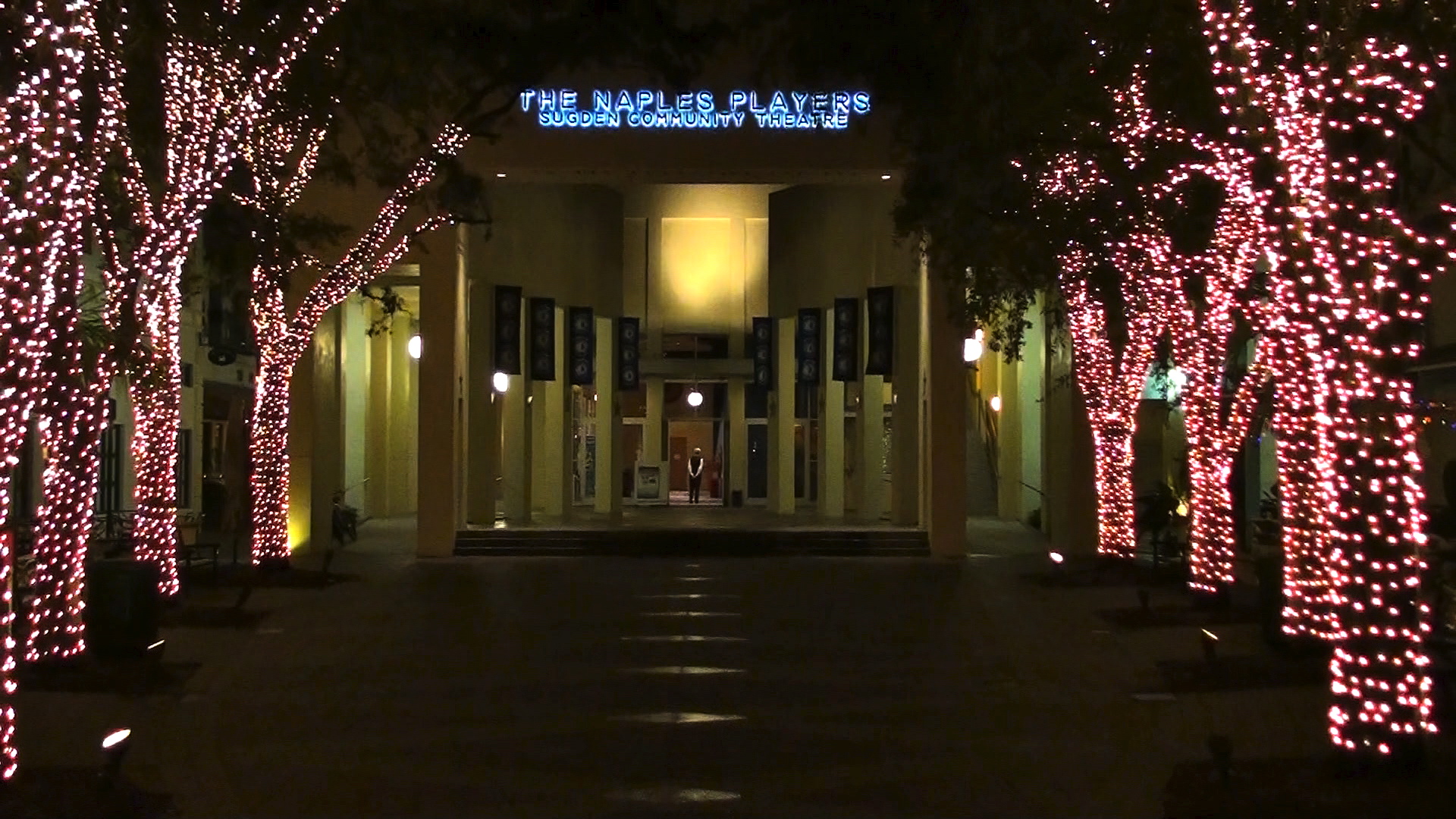|
Naples Players
The Naples Players (TNP) is a community theatre company located in Naples, Florida. The company was founded on January 19, 1953 in the Sugden Community Theatre at 701 5th Avenue South in downtown Naples. It has been named the "Best Live Theatre" in Southwest Florida (including professional theaters) fifteen times by the readers poll of ''The Naples Daily News''. History The Naples Players Organization was founded on January 19, 1953. Its first production, '' I Remember Mama'' by John Van Druten, was staged in the auditorium of what is now Gulfview Middle School the night of March 20, 1953. The company staged its first musical, HMS Pinafore in 1958. The group performed where it could in its first 22 years of existence in various locations in Naples, from local schools and storefronts to homes. In 1975, they established a home base for the next decade when a 40-seat playhouse was opened at 2363 Davis Boulevard. In 1985, TNP converted the now-demolished Kon-Tiki ... [...More Info...] [...Related Items...] OR: [Wikipedia] [Google] [Baidu] |
Community Theatre
Community theatre refers to any theatrical performance made in relation to particular communities—its usage includes theatre made by, with, and for a community. It may refer to a production that is made entirely by a community with no outside help, or a collaboration between community members and professional theatre artists, or a performance made entirely by professionals that is addressed to a particular community. Community theatres range in size from small groups led by single individuals that perform in borrowed spaces to large permanent companies with well-equipped facilities of their own. Many community theatres are successful, non-profit businesses with a large active membership and, often, a full-time staff. Community theatre is often devised and may draw on popular theatrical forms, such as carnival, circus, and parades, as well as performance modes from commercial theatre. This type of theatre is ever-changing and evolving due to the influences of the community; the ar ... [...More Info...] [...Related Items...] OR: [Wikipedia] [Google] [Baidu] |
Youth
Youth is the time of life when one is young. The word, youth, can also mean the time between childhood and adulthood ( maturity), but it can also refer to one's peak, in terms of health or the period of life known as being a young adult. Youth is also defined as "the appearance, freshness, vigor, spirit, etc., characteristic of one, who is young". Its definitions of a specific age range varies, as youth is not defined chronologically as a stage that can be tied to specific age ranges; nor can its end point be linked to specific activities, such as taking unpaid work, or having sexual relations. Youth is an experience that may shape an individual's level of dependency, which can be marked in various ways according to different cultural perspectives. Personal experience is marked by an individual's cultural norms or traditions, while a youth's level of dependency means the extent to which they still rely on their family emotionally and economically. Terminology and definiti ... [...More Info...] [...Related Items...] OR: [Wikipedia] [Google] [Baidu] |
Rehearsal
A rehearsal is an activity in the performing arts that occurs as preparation for a performance in music, theatre, dance and related arts, such as opera, musical theatre and film production. It is undertaken as a form of practising, to ensure that all details of the subsequent performance are adequately prepared and coordinated. The term ''rehearsal'' typically refers to ensemble activities undertaken by a group of people. For example, when a musician is preparing a piano concerto in their music studio, this is called ''practising'', but when they practice it with an orchestra, this is called a ''rehearsal''. The music rehearsal takes place in a music rehearsal space. A rehearsal may involve as few as two people, as with a small play for two actors, an art song by a singer and pianist or a folk duo of a singer and guitarist. On the other end of the spectrum, a rehearsal can be held for a very large orchestra with over 100 performers and a choir. A rehearsal can involve only perf ... [...More Info...] [...Related Items...] OR: [Wikipedia] [Google] [Baidu] |
Sprung Floor
A sprung floor is a floor that absorbs shocks, giving it a softer feel. Such floors are considered the best kind for dance and indoor sports and physical education, and can enhance performance and greatly reduce injuries. Modern sprung floors are supported by foam backing or rubber feet, while traditional floors provide their spring through bending woven wooden battens. The earliest, on-record, sprung-floor ballroom is in the New Zealand Premier House, when expanded in 1872–73. Dance halls with sprung hard wood floors date back to the late 19th century. The sprung floor at Blackpool Tower Ballroom dates from 1894. The UK's Accrington Conservative Club, built in 1890, had a Grand Ballroom with a sprung floor. Many other historical dance halls have sprung hard wood floors, such as the Spanish Ballroom at Glen Echo Park, Maryland (1933), Willowbrook Ballroom in Chicago (1921), the Crystal Ballroom in Portland, Oregon (1914), the Carrillo Ballroom in Santa Barbara, California ... [...More Info...] [...Related Items...] OR: [Wikipedia] [Google] [Baidu] |
Outreach
Outreach is the activity of providing services to any population that might not otherwise have access to those services. A key component of outreach is that the group providing it is not stationary, but mobile; in other words, it involves meeting someone in need of an outreach service at the location where they are. Compared with traditional service providers, outreach services are provided closer to where people may reside, efforts are very often voluntary, and have fewer, if any, enforceable obligations. In addition to delivering services, outreach has an educational role, raising the awareness of existing services. It includes identification of under-served populations and service referral and the use of outreach tools like leaflets, newsletters, advertising stalls and displays, and dedicated events. Outreach is often meant to fill in the gap in the services provided by mainstream (often governmental) services, and is often carried out by non-profit, nongovernmental organizati ... [...More Info...] [...Related Items...] OR: [Wikipedia] [Google] [Baidu] |
Financial
Finance is the study and discipline of money, currency and capital assets. It is related to, but not synonymous with economics, the study of production, distribution, and consumption of money, assets, goods and services (the discipline of financial economics bridges the two). Finance activities take place in financial systems at various scopes, thus the field can be roughly divided into personal, corporate, and public finance. In a financial system, assets are bought, sold, or traded as financial instruments, such as currencies, loans, bonds, shares, stocks, options, futures, etc. Assets can also be banked, invested, and insured to maximize value and minimize loss. In practice, risks are always present in any financial action and entities. A broad range of subfields within finance exist due to its wide scope. Asset, money, risk and investment management aim to maximize value and minimize volatility. Financial analysis is viability, stability, and profitability asse ... [...More Info...] [...Related Items...] OR: [Wikipedia] [Google] [Baidu] |
Scholarships
A scholarship is a form of financial aid awarded to students for further education. Generally, scholarships are awarded based on a set of criteria such as academic merit, diversity and inclusion, athletic skill, and financial need. Scholarship criteria usually reflect the values and goals of the donor of the award, and while scholarship recipients are not required to repay scholarships, the awards may require that the recipient continue to meet certain requirements during their period of support, such maintaining a minimum grade point average or engaging in a certain activity (e.g., playing on a school sports team for athletic scholarship holders). Scholarships also range in generosity; some range from covering partial tuition ranging all the way to a 'full-ride', covering all tuition, accommodation, housing and others. Some prestigious, highly competitive scholarships are well-known even outside the academic community, such as Fulbright Scholarship and the Rhodes Scholarsh ... [...More Info...] [...Related Items...] OR: [Wikipedia] [Google] [Baidu] |
Acting
Acting is an activity in which a story is told by means of its enactment by an actor or actress who adopts a character—in theatre, television, film, radio, or any other medium that makes use of the mimetic mode. Acting involves a broad range of skills, including a well-developed imagination, emotional facility, physical expressivity, vocal projection, clarity of speech, and the ability to interpret drama. Acting also demands an ability to employ dialects, accents, improvisation, observation and emulation, mime, and stage combat. Many actors train at length in specialist programs or colleges to develop these skills. The vast majority of professional actors have undergone extensive training. Actors and actresses will often have many instructors and teachers for a full range of training involving singing, scene-work, audition techniques, and acting for camera. Most early sources in the West that examine the art of acting ( grc-gre, ὑπόκρισις, ''hypokrisis'') d ... [...More Info...] [...Related Items...] OR: [Wikipedia] [Google] [Baidu] |
Improvisation
Improvisation is the activity of making or doing something not planned beforehand, using whatever can be found. Improvisation in the performing arts is a very spontaneous performance without specific or scripted preparation. The skills of improvisation can apply to many different faculties, across all artistic, scientific, physical, cognitive, academic, and non-academic disciplines; see Applied improvisation. Improvisation also exists outside the arts. Improvisation in engineering is to solve a problem with the tools and materials immediately at hand. Improvised weapons are often used by guerrillas, insurgents and criminals. Engineering Improvisation in engineering is to solve a problem with the tools and materials immediately at hand. Examples of such improvisation was the re-engineering of carbon dioxide scrubbers with the materials on hand during the Apollo 13 space mission, or the use of a knife in place of a screwdriver to turn a screw. Engineering improvisations ... [...More Info...] [...Related Items...] OR: [Wikipedia] [Google] [Baidu] |
Dance
Dance is a performing art form consisting of sequences of movement, either improvised or purposefully selected. This movement has aesthetic and often symbolic value. Dance can be categorized and described by its choreography, by its repertoire of movements, or by its historical period or place of origin. An important distinction is to be drawn between the contexts of theatrical and participatory dance, although these two categories are not always completely separate; both may have special functions, whether social, ceremonial, competitive, erotic, martial, or sacred/liturgical. Other forms of human movement are sometimes said to have a dance-like quality, including martial arts, gymnastics, cheerleading, figure skating, synchronized swimming, marching bands, and many other forms of athletics. There are many professional athletes like, professional football players and soccer players, who take dance classes to help with their skills. To be more specific professional athlet ... [...More Info...] [...Related Items...] OR: [Wikipedia] [Google] [Baidu] |
Voice
The human voice consists of sound made by a human being using the vocal tract, including talking, singing, laughing, crying, screaming, shouting, humming or yelling. The human voice frequency is specifically a part of human sound production in which the vocal folds (vocal cords) are the primary sound source. (Other sound production mechanisms produced from the same general area of the body involve the production of unvoiced consonants, clicks, whistling and whispering.) Generally speaking, the mechanism for generating the human voice can be subdivided into three parts; the lungs, the vocal folds within the larynx (voice box), and the articulators. The lungs, the "pump" must produce adequate airflow and air pressure to vibrate vocal folds. The vocal folds (vocal cords) then vibrate to use airflow from the lungs to create audible pulses that form the laryngeal sound source. The muscles of the larynx adjust the length and tension of the vocal folds to 'fine-tune' pitch and ton ... [...More Info...] [...Related Items...] OR: [Wikipedia] [Google] [Baidu] |
Audition
An audition is a sample performance by an actor, singer, musician, dancer or other performer. It typically involves the performer displaying their talent through a previously memorized and rehearsed solo piece or by performing a work or piece given to the performer at the audition or shortly before. In some cases, such as with a model or acrobat, the individual may be asked to demonstrate a range of professional skills. Actors may be asked to present a monologue. Singers will perform a song in a popular music context or an aria in a Classical context. A dancer will present a routine in a specific style, such as ballet, tap dance or hip-hop, or show his or her ability to quickly learn a choreographed dance piece. The audition is a systematic process in which industry professionals select performers, which is in some ways analogous to a job interview in the regular job market. In an audition, the employer is testing the ability of the applicant to meet the needs of the job and asse ... [...More Info...] [...Related Items...] OR: [Wikipedia] [Google] [Baidu] |



.jpg)




